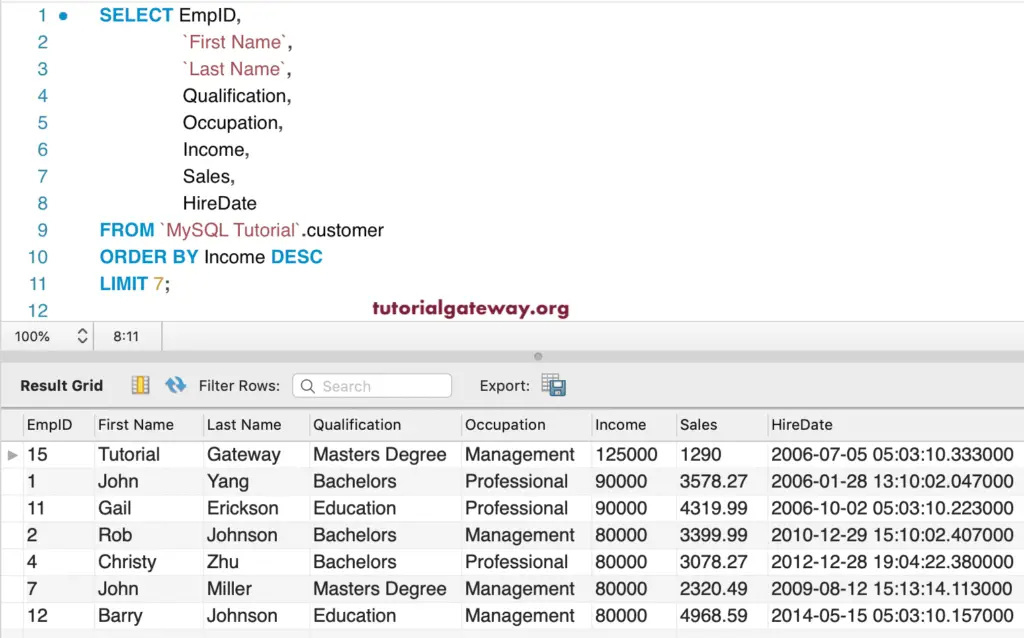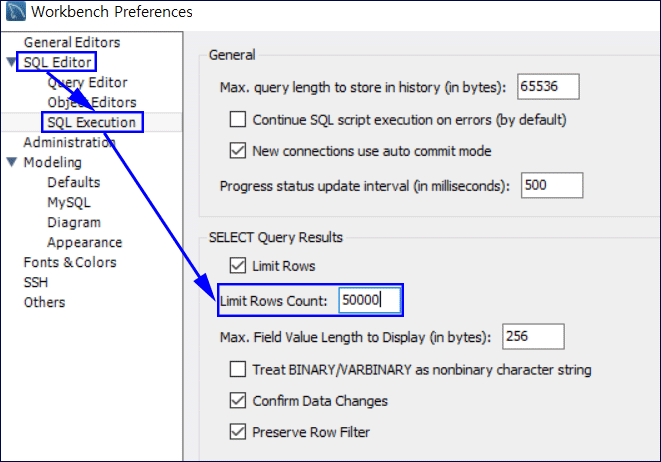
In order to fight sluggish load times, the system designer ordered you to restrict the number of records shown on a screen to 20 records. Suppose you are designing an app that runs over myflixdb. When Does One Need to Use the Limit Clause? The following SQL query says "return only 10 records, launch record 16” (OFFSET 15)": $sql = "SELECT * FROM Orders LIMIT 10 OFFSET 15" It can also be done through MySQL: using OFFSET. What if you want to pick 16 - 25 (including) records? They returned the first 30 records when the SQL query mentioned above is executed. Suppose you choose to pick from a table named "Orders" any record including 1 - 30, the SQL query will appear as follows: It can't be negative, otherwise, mistakes will return.Įxplain with an example: MySQL has a LIMIT clause to determine the number of logs to be returned. The value of OFFSET must be equal to or greater than zero.

In a case where you have to select the top three students in a class without using any condition statements, the LIMIT in SQL operator can be used. There must be a non-negative integer for LIMIT/offset expressions.The SQL2008 OFFSET/FETCH FIRST clause can also be defined.It should be noted that not all SQL versions accept this provision.The LIMIT clause sets A LIMIT on the number of tuples returned by SQL.If the question conditions are satisfied for numerous tuples, only a few can be seen at a time.

A lot of records can influence success when they are returned. The LIMIT in SQL is a clause that enables multi-page outcomes or SQL pagination to be easily coded and is very helpful on large tables. This is the work of LIMIT, where it helps to give you the desired results in the way you want, in a properly filtered manner. When dealing with large databases, developers need to filter their codes so that the exact value can be reached. LIMIT in SQL is one of the most important clauses there is.


 0 kommentar(er)
0 kommentar(er)
